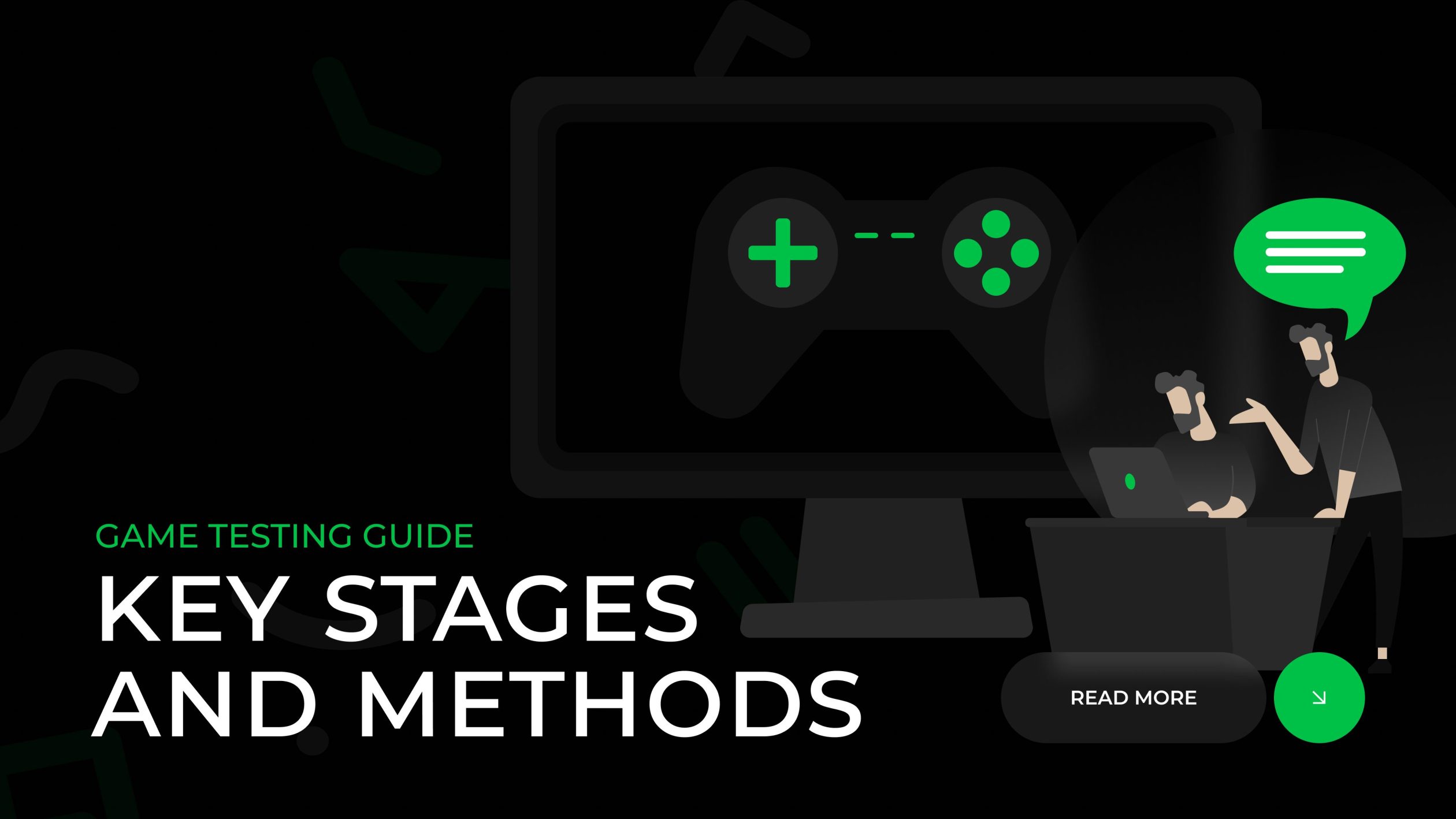Game testing is the backbone of game development, ensuring players experience a polished, bug-free, and enjoyable product. Whether you’re a developer aiming to improve your QA process or a game enthusiast curious about what goes on behind the scenes, this guide will walk you through the essential stages and methods of game testing.
Let’s explore how top game studios ensure their titles meet the highest standards through structured, thorough testing practices.
Stage 1: Pre-Alpha Testing – Laying the Groundwork
What it is:
- Pre-alpha testing starts when the game is still in its infancy. It’s the earliest phase where testers work directly with initial code, prototypes, and early gameplay mechanics. At this stage, code stability and major system functionalities are the focus.
- Key activities:
- Smoke testing to check if the game even runs.
- Identifying critical bugs like crashes or game-breaking issues.
- Ensuring core systems (movement, combat, inventory, etc.) are functional.
- Why it’s important:
- Pre-alpha testing prevents major delays by catching fundamental flaws early on. The goal isn’t to make the game perfect but to ensure it’s on the right track, eliminating blockers before development ramps up.
- Pro tip:
- At this stage, developers often work closely with in-house or trusted external QA teams to catch crucial issues before moving forward. Building automated test suites early on can save time in later stages.
Stage 2: Alpha Testing – Building the Core Experience
What it is:
- During the alpha phase, the game’s main features start taking shape. This is where testers focus on core gameplay mechanics—combat, AI behavior, and physics systems.
- Key activities:
- Testing key gameplay elements for bugs and balance.
- Running regression tests to ensure new updates don’t break previous fixes.
- Introducing automation tools for repetitive tasks like UI testing.
- Why it’s important:
- This phase is about creating a solid foundation. Alpha testing helps verify whether the game’s fundamental systems—such as progression, controls, and interactions—are enjoyable and functional.
- Pro tip:
- In alpha, focus heavily on iteration cycles: test, fix, re-test. An iterative approach ensures no bug or imbalance gets missed as the game evolves.
Stage 3: Beta Testing – Refining for the Audience
What it is:
- Beta testing is the stage where the game, while mostly complete, is opened to a select group of external testers (closed beta) or the public (open beta). This phase focuses on fine-tuning the game for real players.
- Key activities:
- Gathering player feedback on bugs, balance issues, and user experience.
- Stress testing servers and multiplayer features.
- Monitoring analytics like session lengths, drop-off points, and user behavior.
- Why it’s important:
- This is your first chance to see how the game performs in real-world conditions. The feedback gathered in beta testing is crucial for polishing the final product and addressing any remaining issues.
- Pro tip:
- Consider running multiple beta tests with different objectives: one for stability testing, another for gameplay balance, and one focusing on user experience. Each provides unique insights into the game’s readiness.
Stage 4: Gold Master Testing – Polish and Prepare for Launch
What it is:
- This is the final phase of testing before the game’s release. Gold master testing is all about polishing the game and ensuring it’s ready to go live across platforms. It’s where QA testers ensure that every detail is working as intended.
- Key activities:
- Final bug hunts for any lingering issues.
- Checking the game on all platforms (PC, consoles, mobile) for compatibility.
- Running localization tests to ensure proper translations and cultural adjustments.
- Why it’s important:
- A smooth launch can make or break a game’s success. The final checks ensure no stone is left unturned, guaranteeing players get a seamless experience from day one.
- Pro tip:
- Pay extra attention to multiplatform testing. A game that works perfectly on one platform may still have issues on another, whether it’s controller compatibility or performance bugs on specific hardware.
Key Methods in Game Testing
1. Functional Testing – Ensuring Everything Works
Functional testing is the bread and butter of game testing. It involves checking whether every feature of the game works as expected—menus, combat mechanics, inventory systems, and interactions with the environment.
Key focus:
Verifying that all game functions (UI, mechanics, features) perform without errors.
Checking that bugs fixed in previous phases don’t reappear (regression testing).
Pro tip:
Start small and scale up. Test simple interactions first, then move to complex scenarios to ensure the game holds up as players engage deeper.
2. Performance Testing – Stressing the Game to Its Limits
Performance testing is about ensuring the game performs well under different conditions. It’s especially critical for games with complex visuals, multiplayer elements, or large open worlds.
Key focus:
Testing frame rates, load times, and network latency across platforms.
Running the game under extreme conditions (e.g., large battles, max number of players).
Pro tip:
Simulate real-world scenarios using cloud-based environments to stress test multiplayer servers before launch. This can save you from massive issues on release day.
3. Exploratory Testing – Uncovering the Unexpected
While most testing follows a structured plan, exploratory testing allows testers to dive into the game without a set script. This is where testers play like players, looking for bugs or inconsistencies in ways that predefined tests might miss.
Key focus:
Testing without constraints to uncover unusual bugs.
Pushing the limits of the game’s mechanics and physics to discover hidden issues.
Pro tip:
Use exploratory testing towards the end of each phase to catch outlier bugs that scripted tests might not detect.
4. Compatibility Testing – Making Sure It Works Everywhere
Compatibility testing ensures the game runs smoothly across all devices, operating systems, and hardware configurations. It’s particularly important for games launching on multiple platforms.
Key focus:
Testing on different combinations of hardware (GPUs, CPUs, consoles).
Ensuring the game runs on various operating systems and versions.
Pro tip:
Use emulators and cloud testing environments to simulate different hardware setups, reducing the need for expensive testing labs.
5. Localization Testing – Preparing for Global Audiences
Localization testing involves ensuring that the game feels native to players around the world. This includes not only language translation but also cultural adjustments to graphics, symbols, and references.
Key focus:
Verifying text fits within UI elements after translation.
Ensuring that voice-overs, subtitles, and in-game text match the context.
Pro tip:
Involve native speakers in localization testing to ensure translations are culturally accurate and idiomatic. This step helps avoid awkward or offensive translations.
Conclusion: Mastering Game Testing
Game testing is not just about finding bugs—it’s about ensuring the game meets the high expectations of today’s players. By following structured testing stages and leveraging advanced methods, developers can craft immersive, enjoyable games that stand out in a crowded market.
Whether you’re a QA specialist or a developer, this guide serves as a roadmap to make sure your game is optimized, stable, and ready for launch. The more thorough and innovative your testing approach, the greater your game’s chance of success.













